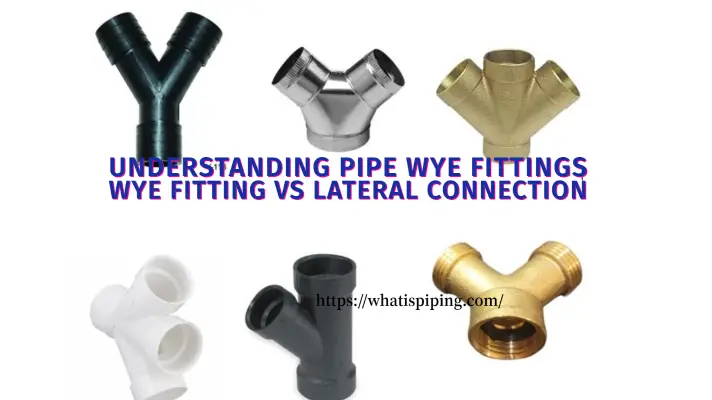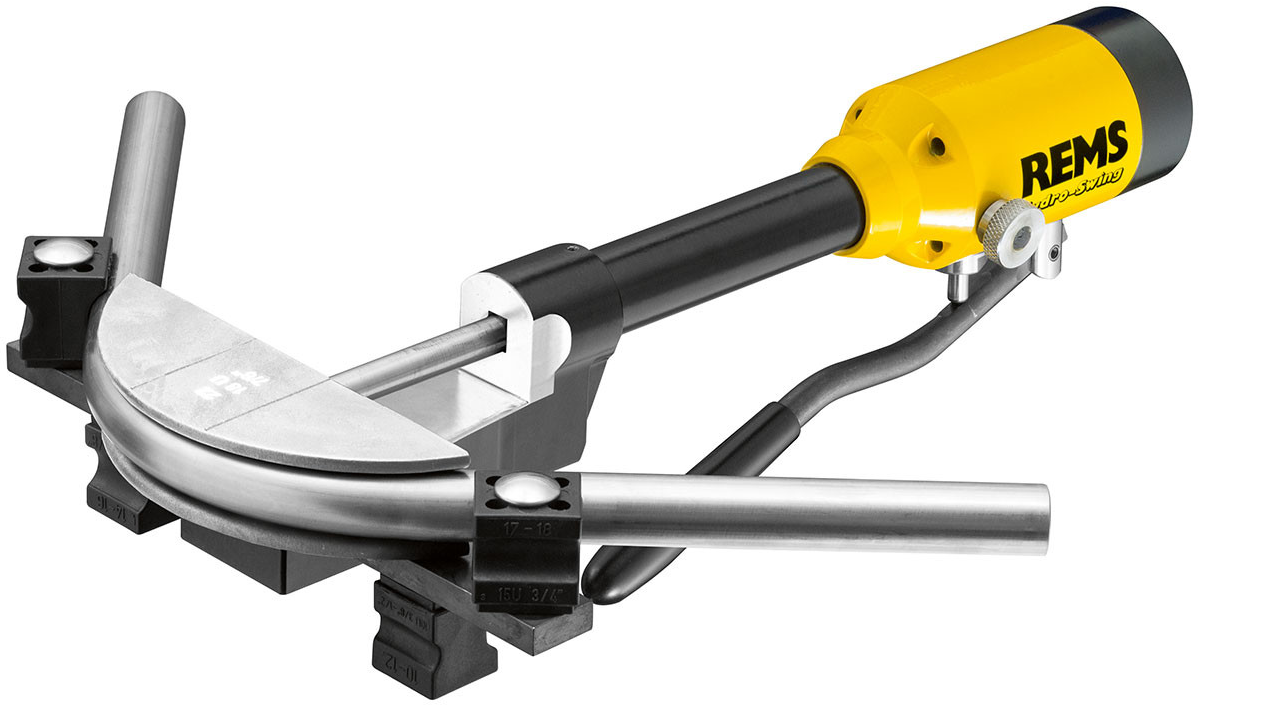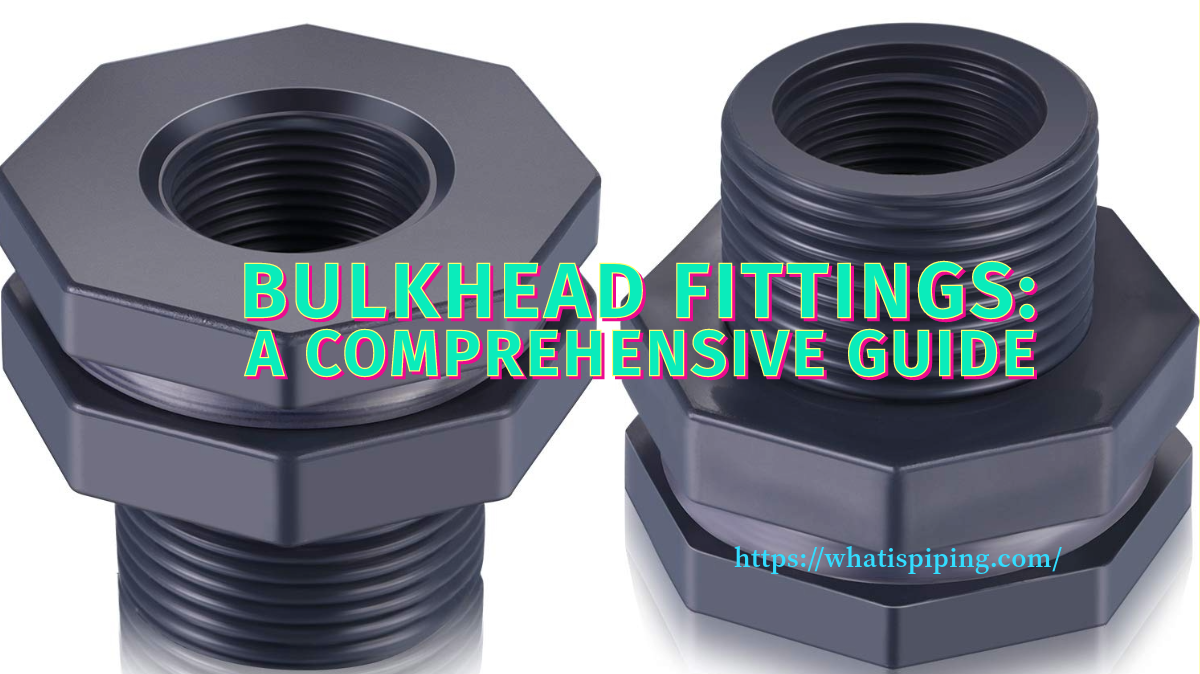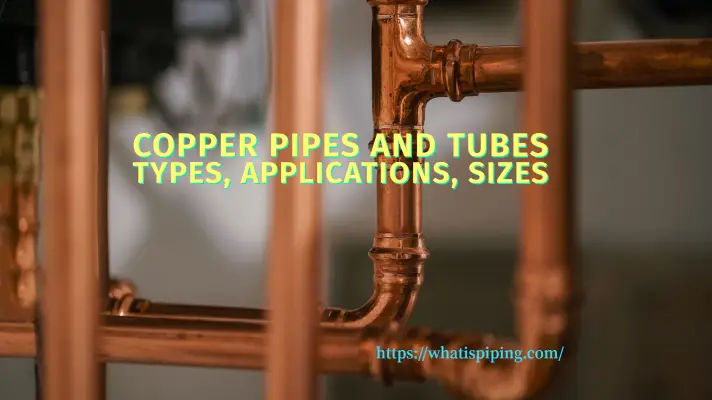In the world of fluid systems, precision and reliability are paramount. Whether you’re dealing with hydraulic machinery, pneumatic systems, or even plumbing applications, the components you choose can make or break the efficiency and safety of your operation. One such essential component that often goes unnoticed but plays a pivotal role is the tube fitting. In this article, we’ll explore the world of tube fittings, learning what they are, their types, applications, materials, selection, and why they matter.
What are Tube Fittings?
Tube fittings are mechanical components used to connect and seal tubing or pipes in fluid systems. Their primary function is to ensure a secure and leak-free connection, which is vital in applications where even a minor leak can lead to inefficiencies or safety hazards. Tube fittings can be found in various industries, from aerospace and automotive to oil and gas, manufacturing, and plumbing.
Types of Tube Fittings
Tube fittings come in a wide array of designs, each suited to different applications and requirements. Here are some common types:
- Compression Fittings: These fittings work by compressing a ferrule onto the tube when tightened. They are popular in low-pressure applications like instrumentation and general plumbing.
- Flare Fittings: Flare fittings are used in high-pressure applications. They feature a conical sealing surface and are commonly found in refrigeration systems.
- Push-to-Connect Fittings: These are easy to install and disassemble, making them ideal for DIY projects and pneumatic systems. They are also known as quick couplers.
- Quick-Connect Fittings: Often used in applications requiring frequent disconnection, these fittings feature a quick-release mechanism.
- Threaded Fittings: Threaded tube fittings use threads to secure the connection. They are widely used in plumbing and industrial applications.
- Weld Fittings: These fittings are welded directly onto pipes or tubing for a permanent and robust connection, commonly used in high-temperature and high-pressure applications.
- Barb Fittings: Barb fittings have small, barbed ridges that grip the tubing when it’s pushed onto them. They are prevalent in low-pressure applications.
- Luer Locks: Luer locks are a specific type of tube fitting used in the medical and pharmaceutical industries, as well as in laboratory settings. They are designed to securely connect various medical devices, such as syringes, needles, catheters, and IV lines. Luer locks consist of two parts, a male and a female component, both featuring a threaded, conical design. When the male and female components are twisted together, the threads engage and create a secure and leak-proof connection. Luer locks are known for their ease of use, reliability, and ability to prevent accidental disconnections, making them a standard choice for medical and laboratory applications requiring precise and secure fluid connections.
- Mechanical Grip Fittings: Mechanical grip fittings, also known as mechanical or grip-type fittings, are a type of tube fitting designed to create a strong and secure connection between tubes or pipes. Unlike compression fittings that rely on the compression of a ferrule, mechanical grip fittings use mechanical force to grip the tube tightly. They typically feature two components: a body with a threaded end and a nut. As the nut is tightened onto the body, it presses against the tube, creating a secure grip. These fittings are commonly used in high-pressure and high-temperature applications, such as hydraulic systems and industrial piping, where the connection must withstand extreme conditions and vibrations.
- Square Tube Fittings: Square tube fittings are a type of specialized tube or pipe fitting designed for use with square or rectangular tubing. These fittings are commonly used in structural and construction applications where square or rectangular tubes are used to create frameworks, frames, supports, and other structures. Square tube fittings are specifically engineered to accommodate the unique shape of square or rectangular tubing. They come in various configurations, such as connectors, corners, T-joints, and adapters, allowing for the assembly of square and rectangular tubing into custom structures. These fittings are often made from materials like steel, aluminum, or plastic, depending on the application’s requirements.
- Flareless Tube Fittings: Flareless tube fittings, also known as compression fittings or bite-type fittings, are a type of tube fitting designed to create a secure and leak-free connection between tubing or pipes. Unlike traditional flare fittings that require the tubing end to be flared (flattened and angled), flareless fittings do not require flaring, making them easier to install. Flareless fittings consist of a body, a ferrule (also known as a compression ring or sleeve), and a nut. When the nut is tightened onto the body, the ferrule compresses around the tube, forming a tight seal. These fittings are commonly used in applications where ease of installation, reliability, and a leak-free connection are essential, such as hydraulic and pneumatic systems, instrumentation, and plumbing.

Tube Fitting Sizes
Tube fitting sizes refer to the dimensions of tube fittings, which are crucial for ensuring compatibility and creating leak-free connections in fluid systems. Tube fitting sizes are typically expressed in terms of several key measurements:
- Tube or Pipe Size: This measurement denotes the nominal size of the tubing or pipe that the fitting is designed to connect. It corresponds to the outer diameter (OD) for tubing or the nominal pipe size (NPS) for pipes. Common examples include 1/4 inch, 3/8 inch, 1/2 inch, and so on.
- Thread Size: In fittings with threaded connections, the thread size is specified in terms of the thread’s dimensions. For example, it could be NPT (National Pipe Thread), BSP (British Standard Pipe), or another threading standard. The thread size includes information about the thread’s diameter and pitch.
- Port Size: In fittings that have ports, such as hydraulic fittings, the port size indicates the size of the opening or the internal diameter where the fluid flows through. Port sizes are often standardized for specific applications.
- Nominal Size (Nominal Diameter): This measurement represents the approximate size of the fitting’s opening or bore. It is an important consideration when choosing fittings for compatibility with tubing or pipes.
- OD (Outside Diameter): The outside diameter of the fitting refers to the measurement across the widest part of the fitting. This dimension helps determine whether the fitting can properly seat on the tubing or pipe.
- ID (Inside Diameter): The inside diameter is the measurement of the opening inside the fitting where the fluid flows. It is essential for understanding flow characteristics and compatibility with the tubing or pipe.
Applications of Tube Fittings
Tube fittings find applications in various industries and settings:
- Hydraulic Systems: In heavy machinery, tube fittings are crucial for transferring hydraulic fluids efficiently and reliably.
- Pneumatic Systems: These fittings are essential in systems that use compressed air to power tools and equipment.
- Instrumentation: In laboratories and industrial settings, precision is key, and tube fittings ensure accurate fluid handling.
- Oil and Gas: Tube fittings are used to transport oil, gas, and other fluids in harsh conditions, including offshore drilling and refineries.
- Aerospace: In the aerospace industry, where safety and precision are paramount, tube fittings are vital in fuel and hydraulic systems.
- Plumbing: In residential and commercial plumbing systems, tube fittings are used to connect pipes securely.
How to Specify Tube Fittings?
Specifying tube fittings is a critical process to ensure that you choose the right fittings for your specific application. Improperly specified fittings can lead to leaks, inefficiencies, and safety hazards. The parameters that play an important role in tube fittings selection are:
- Application Requirement
- Fitting Type
- Pressure and temperature rating
- Material selection
- End Connection
- Size and Compatibility
- Cost and Availability
Tube Fitting Materials
Tube fittings come in various materials to accommodate different applications, environmental conditions, and fluid types. Choosing the right material is crucial to ensure the fittings’ longevity, resistance to corrosion, and compatibility with the fluids they will handle. Here are some common materials used for tube fittings:
Stainless Steel Tube Fittings:
Stainless steel is a popular choice for tube fittings due to its excellent corrosion resistance, durability, and strength. It is suitable for a wide range of applications, including those involving harsh chemicals and high temperatures. Common stainless steel grades used for fittings include 316, 304, and 316L.
Brass Tube Fittings:
Brass fittings are known for their good corrosion resistance, ductility, and ease of machining. They are commonly used in plumbing and low to medium-pressure industrial applications. Brass is less resistant to corrosive fluids than stainless steel but is more cost-effective.
AluminumTube Fittings:
Aluminum tube fittings are lightweight and corrosion-resistant, making them suitable for applications where weight is a concern, such as in the aerospace and automotive industries. Aluminum fittings are typically used with low to medium pressures.
Copper Tube Fittings:
Copper fittings are excellent conductors of heat and electricity. They are often used in HVAC and refrigeration systems due to their high thermal conductivity. Copper is also used in plumbing for its antimicrobial properties.
Plastics Tube Fittings:
Various plastics, such as polyethylene (PE), polypropylene (PP), and PVC, are used for tube fittings in applications where corrosion resistance and cost-effectiveness are essential. Plastic fittings are often used in water and chemical handling systems.
Carbon Steel Tube Fittings:
Carbon steel fittings are robust and durable, making them suitable for high-pressure applications in industries like oil and gas. They are often coated to enhance corrosion resistance.
Titanium Tube Fittings:
Titanium fittings offer exceptional corrosion resistance, especially in aggressive chemical environments. They are commonly used in chemical processing, pharmaceutical, and aerospace applications. However, titanium can be expensive.
Nickel Alloys Tube Fittings:
Nickel alloys, such as Inconel and Hastelloy, are used in extreme environments where resistance to high temperatures, corrosion, and pressure is required. These alloys are prevalent in chemical processing and petrochemical industries.
Monel Tube Fittings:
Monel is a corrosion-resistant alloy consisting primarily of nickel and copper. It is used in marine, chemical, and oil and gas applications due to its resistance to seawater and corrosive chemicals.
Duplex and Super Duplex Stainless Steel Tube Fittings:
These are advanced stainless steel alloys with high corrosion resistance. They are used in demanding environments like offshore oil rigs and chemical processing plants.
Teflon (PTFE) Tube Fittings:
PTFE fittings are used for their exceptional chemical resistance and non-stick properties. They are commonly found in applications involving highly corrosive or high-purity fluids.
PEX Tube Fittings:
PEX (Cross-linked Polyethylene) tube fittings are connectors used specifically with PEX tubing, a flexible and durable type of plastic tubing commonly used in plumbing systems for both hot and cold water distribution. PEX tube fittings are designed to create secure and leak-free connections between PEX pipes or tubing without the need for soldering, welding, or specialized tools. They typically include various types of fittings, such as PEX couplings, elbows, tees, and valves, and are often used in residential and commercial plumbing installations due to their ease of installation and resistance to corrosion.
When selecting tube-fitting materials, it’s essential to consider factors such as the fluid being transported, temperature and pressure conditions, environmental factors, and the cost-effectiveness of the material.
Why Tube Fittings Matter
- Safety: Leaks in fluid systems can lead to accidents, environmental hazards, and damage to equipment. Tube fittings ensure a secure connection, reducing these risks.
- Efficiency: Properly installed tube fittings minimize pressure drops and turbulence, ensuring the fluid can flow smoothly, which is vital in high-performance systems.
- Reliability: In critical applications like medical equipment or aircraft, reliability is non-negotiable. Tube fittings provide a dependable connection.
- Cost Savings: While quality tube fittings might have a higher upfront cost, they prevent costly downtime, repairs, and fluid losses in the long run.
Differences Between Pipe Fittings and Tube Fittings
Piping fittings and tube fittings are both used to connect pipes or tubing within fluid systems, but they have distinct differences in terms of design, application, and usage. Here are some key differences between piping fittings and tube fittings:
Pipe Fitting vs Tube Fitting in Design and Construction:
Piping Fittings:
- Piping fittings are designed for use with pipes, which typically have a larger diameter and thicker walls than tubing.
- They are generally made from materials like carbon steel, stainless steel, or cast iron.
- Piping fittings often use threaded connections (NPT, BSP) or welding methods for installation.
- They may include fittings such as elbows, tees, reducers, and flanges, which are designed to handle the stresses and pressures associated with larger pipe sizes and heavy-duty applications.
Tube Fittings:
- Tube fittings are designed for use with tubing, which has a smaller diameter and thinner walls compared to pipes.
- They are typically made from materials like stainless steel, brass, aluminum, or various plastics.
- Tube fittings use different types of connections, such as compression, flare, push-to-connect, or mechanical grip fittings, depending on the application.
- These fittings are designed to provide secure and leak-free connections in systems where precision, compactness, and flexibility are important.
Pipe Fitting vs Tube Fitting in Applications:
Piping Fittings:
- Piping fittings are commonly used in heavy industrial applications, such as oil and gas pipelines, chemical plants, and power generation facilities.
- They are suitable for high-pressure and high-temperature environments.
- Piping systems are typically larger and intended for transporting bulk fluids or gases.
Tube Fittings:
- Tube fittings are often used in applications requiring precision and control, such as hydraulic systems, pneumatic systems, instrumentation, and laboratory equipment.
- They are ideal for applications where compactness and flexibility are essential, and where tubing is used to convey fluids or gases.
- Tube fittings are typically used in lower-pressure and lower-temperature environments compared to piping fittings.
Pipe Fitting vs Tube Fitting in Installation:
Piping Fittings:
- Installing piping fittings often involves welding, threading, or soldering processes, which may require skilled labor and special equipment.
- Piping systems are typically assembled on-site and can be more time-consuming to install.
Tube Fittings:
- Tube fittings offer ease of installation, as they often require simple assembly without the need for welding or threading.
- These fittings are designed for quick and straightforward installation, which can reduce labor costs and downtime during maintenance.
Pipe Fitting vs Tube Fitting in Size Range:
Piping Fittings:
Piping fittings are available in a wide range of sizes, typically ranging from 1/8 inch to several feet in diameter.
Tube Fittings:
Tube fittings are designed for smaller sizes, usually ranging from 1/16 inch to around 4 inches in diameter, depending on the type and application.
What is the Meaning of Tube Fittings Swagelok?
“Swagelok” is a well-known brand in the field of tube fittings, valves, and fluid system components. Swagelok tube fittings are a specific line of high-quality tube fittings designed to create reliable and leak-tight connections in various fluid systems, including hydraulic, pneumatic, and industrial applications. These fittings are known for their precision engineering, which ensures that they can withstand high pressures and temperatures while maintaining a secure seal. Swagelok tube fittings come in various types, including compression fittings and instrumentation fittings, and they are widely used in industries where safety and reliability are paramount, such as oil and gas, chemical processing, and aerospace.
What is Tube Fittings Parker?
“Parker” refers to Parker Hannifin Corporation, a globally recognized company that specializes in motion and control technologies, including a wide range of fluid and gas handling products. Parker offers a comprehensive line of tube fittings, valves, and other fluid system components under its brand name.
Parker tube fittings are known for their high quality, precision engineering, and reliability. These fittings are designed to create secure and leak-tight connections in fluid and gas systems, making them suitable for various industries, including aerospace, automotive, oil and gas, pharmaceuticals, and more.
Some common types of Parker tube fittings include compression fittings, push-to-connect fittings, flare fittings, and instrumentation fittings. These fittings are available in various materials, including stainless steel, brass, and other alloys, to suit different applications and environmental conditions.
Parker’s reputation for producing top-quality tube fittings has made them a trusted choice for professionals and industries where precision and safety are critical. When specifying Parker tube fittings, you can expect durable, efficient, and reliable components that meet the stringent demands of various fluid system applications.
Conclusion
Tube fittings are very important elements of fluid systems, silently performing their duties to keep industries and applications running smoothly and safely. The right choice of tube fitting can make all the difference, ensuring that your fluid systems are efficient, reliable, and leak-free. So, next time you see a complex hydraulic system or a well-functioning plumbing system, remember that it’s the tube fittings that often connect the dots behind the scenes.








